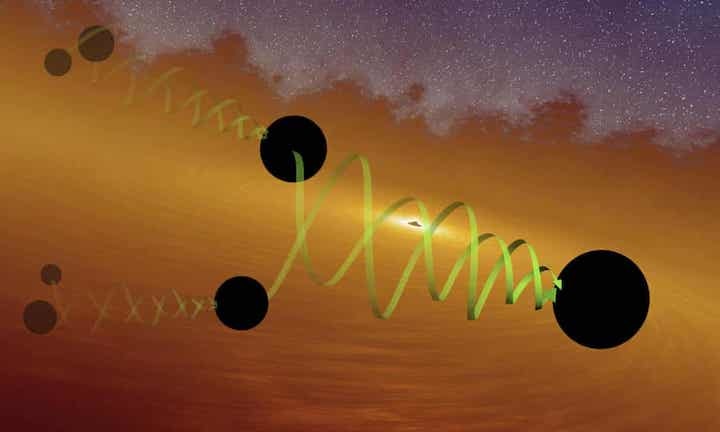Then in May 2019 two detectors picked up a signal that turned out to be the energy from two stellar black holes — each large for a stellar black hole — crashing into each other. One was 66 times the mass of our sun and the other 85 times its mass. The result was the first known intermediate black hole, at 142 times the mass of the sun.
Lost in the collision was an enormous amount of energy in the form of a gravitational wave, a ripple in space that travels at the speed of light. It was that wave that physicists in the US and Europe, using detectors called LIGO and Virgo, captured last year. After deciphering the signal and checking their work, the scientists published the results on Wednesday in the journals Physical Review Lettersand Astrophysical Journal Letters.
Because the detectors allow scientists to pick up the gravitational waves as audio signals, scientists actually heard the collision. For all the violence and drama, the signal lasted only a tenth of a second. “It just sounds like a thud,” Weinstein said. “It really doesn’t sound like much on a speaker.”
This crash happened about 7 bn years ago, when the universe was half its current age, but is only being detected now because it happened so far away.
Black hole collisions have been observed before, but the black holes involved were smaller to begin with, and even after the merger didn’t grow beyond the size of typical stellar black holes.
Scientists still don’t know how supermassive black holes at the centre of galaxies formed, Christensen said, but this new discovery may offer a clue.
It may be that smaller blocks combine to make bigger ones and those combine to make even bigger ones, said Harvard astronomer Avi Loeb, who wasn’t part of the study but said the results chart new astronomical territory.
Indeed, the larger of the two black holes involved in this crash may have been the result of an earlier merger, both Weinstein and Christensen said.
“It’s conceivable that this pair of black holes formed entirely differently, possibly in a dense system with lots of dead stars whizzing about, which allows one black hole to capture another during a fly-by,” said Barnard College astronomer Janna Levin, author of the book Black Hole Survival Guide.
On the other hand, scientists can’t quite explain how merged black holes, flying around the universe, would meet so many others to merge again and grow ever bigger. It could instead be that supermassive black holes were formed in the immediate aftermath of the big bang.
“In astrophysics, we’re always faced with surprises,” Weinstein said.

